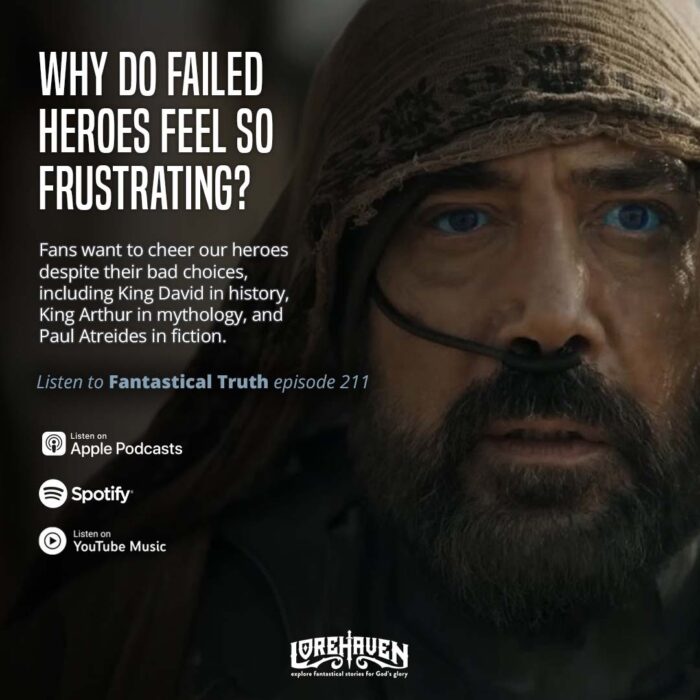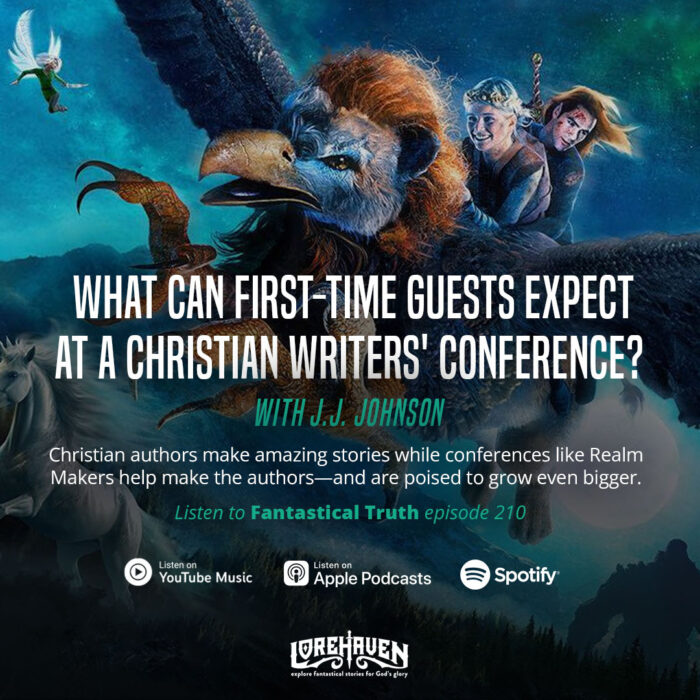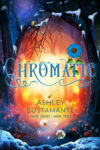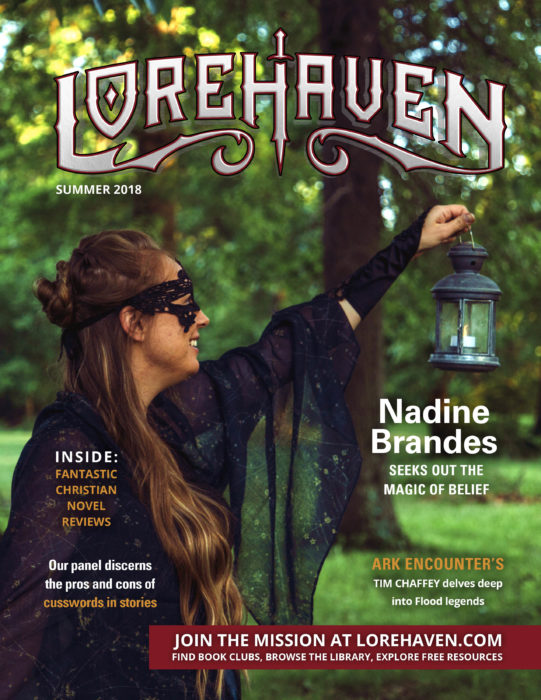Horror Reveals Human Sin in the Dark
Horror remains one of the most popular of all film and novel genres.
Just last year, we saw the blockbuster success of a new film based on Stephen King’s horror novel It, and many other films, making 2017 the highest-grossing year for horror films in box office history.
Many Christians ask why the genre stays so popular. Is this just a lurid fascination with gore and evil? Or do we find deeper psychological and spiritual issues in play?
Whatever the answer, horror has a long and storied prevalence in human culture.
In his seminal essay, Supernatural in Horror Literature, H. P. Lovecraft traced horror stories back to “the earliest folklore of all races.” As we may naturally expect of a form so connected with primal emotion, the horror tale is as old as human thought and speech. This earliest folklore also includes themes of cosmic terror, crystallized in the most archaic ballads, chronicles, and sacred writings.
Of course, one needn’t go back as far as pagan myths to uncover tales of terror.
Dante’s Inferno (1314) conjures profound yet disturbing images. Hailed as one of the great classics of Western literature, Dante’s work details a harrowing journey through the nine circles of Hell, including a virtual bestiary of oddities. Minions of anger, fire, gluttony, and greed, Medusa, the Minotaur, Hoarders and Wasters, Furies, Harpies and “the great worm” Cerberus all make appearances in the Inferno. Dante’s work is only one precursor to the canon of classic horror literature.
Mary Shelley’s Frankenstein (1818) not only created a monster, but explored a creator and his creation, and the inherent problems of tinkering with the natural order. (This theme is later explored by many sci-fi and horror films during the Atomic Era.)
Other early horror stories, such as The Strange Case of Dr. Jekyll and Mr. Hyde, The Invisible Man, and The Picture of Dorian Gray, all use horror as a way to explore morality plays. Nowadays these stories have been replaced by more exotic monsters and more hideous tales. Nevertheless, their intent remains largely the same—to employ the horrific to shock us awake.
Some Christians believe horror opposes a biblical worldview, or even serves evil. But storytellers often use the genre to convey religious and moral messages.
For example, The Exorcist (1973) is often cited as one of the scariest movies ever made. However, both the film director and author William Peter Blatty claimed the story’s vision is seen through the lens of faith. In his 2011 interview with The Huffington Post, Blatty was asked, “Why do you think the story of The Exorcist, in its many forms, has resonated so much for so many people?” He responded:
“Because this novel is an affirmation that there is a final justice in the universe; that man is something more than a neuron net; that there is a high degree of probability—let’s not beat around the bush—that there is an intelligence, a creator whom C. S. Lewis famously alluded to as ‘the love that made the worlds.’”
Likewise, the horror genre reflects many biblical concepts. These include an absolute good and evil, angels and devils, Heaven and Hell, or simply the iconography of faith (like crucifixes, sacred texts, rosaries, and statuary).
This does not mean we claim every work of horror is something redemptive. Instead, we simply note that this category often includes consistent appeals to moral absolutes, God and Satan, and invisible agents at war for humanity’s soul.
Even the average ghost story, which recognizes immaterial dimensions or possible life after death, appeals to a biblical worldview. In this sense, the horror genre often traffics in important biblical language and imagery.
Perhaps more people would be startled by the many times we find horror elements in the Bible. In defining the horror genre, the Horror Writers Association in its online article “What is Horror Fiction?” cites the Bible as part of horror’s essential canon:
The best selling book of all time, the Bible, could easily be labeled horror, for where else can you find fallen angels, demonic possessions, and an apocalypse absolutely terrifying in its majesty all in one volume?
Some Christians frame the Bible as “family-friendly.” But Scripture does not avoid details about evil. Its pages contain scenes of gore, torment, destruction, demons, plagues, sexual deviance, catastrophe, divine judgment, and eternal anguish.
Of course, Scripture’s message is one of redemption. However, that redemption unfolds amidst a dark world. The Bible is not shy about confronting the consequences of our sins, the fallenness of this world, and the terrible price God paid to save us from spiritual separation.
Even after Jesus’s sacrifice, horror remains a very real part of life. Tragedy, evil, crime, the occult, and deviance are mainstays in our culture. Sin has ravaged us, deforming us into moral monsters and alienating us from God. Alternate lifestyles and religious views can take one down paths of despair and deception. For example, see the Apostle Paul’s pictures of horror in Romans 1.
God’s word uses these images of horror to caution us and shock our sensibilities. Horror images contrast with and illuminate what is good and true and beautiful. Eternal consequences are at stake. Whether illustrating a world where demons are real, portraying monsters real or imagined, or exploring the real-life inferno that awaits the lost, the horror genre can be a powerful way to communicate truth.




































CHRISTIANITY AND HORROR: AN UNLIKELY ALLIANCE?
Let me be the first to comment that I don’t find watching a horror film an edifying way to spend a couple of hours. While it is satisfying and victorious when good overcomes evil, do I really want to spend the preceding hours immersed in grotesque acts of violence? But then, am I being hypocritical, considering I do have a soft spot for creature features and disaster movies? Dear O Dear what a conundrum!
One point Mike makes that I won’t argue against is—Scripture does not avoid details about evil. I just have to consider the detailed accounts of human wickedness preceding the flood or the plagues in Egypt. These stories serve to underline the subsequent deliverance, magnifying the power of God’s intervention.
However, Philippians 4 from verse 8 urges believers to dwell on whatever is true, honourable, just, pure, lovely, and commendable. So here’s my question: Could we fully comprehend the glory and goodness of God without understanding the horror of hellfire and evil?
Human experience suggests that understanding and appreciating the good often comes from its contrast with the bad. I often say to people who bitterly complain about bad weather that if it weren’t for the wet, dark, thunderous days, we wouldn’t delight in the glorious, warm sunny ones! Just as light shines brightest against inky darkness, so too does not the glory of God shine supreme against a backdrop of evil? Could it be that by witnessing and understanding the depth of evil, believers can gain a deeper appreciation for the height of God’s goodness and the desperate need for His grace?
Ephesians 5:11-14 tells us to take no part in the unfruitful works of darkness, but instead expose them. For it is shameful even to speak of the things that they do in secret. But when anything is exposed by the light, it becomes visible, for anything that becomes visible is light.
Can this passage be interpreted as a call to expose and confront darkness, which could be a valid reason for writing horror that reveals and contests evil? The exposure to darkness not only makes the light visible but transforms. The horror genre, with its stark portrayals of evil, offers a stage on which the Christian narrative of redemption can be vividly illustrated.
Let’s step back a moment and ask who is to blame for all this in the first place? Satan? “Well, yes!” we cry in one accord. It’s easy to blame Satan. In blaming him we allow ourselves a reprieve. It is easy for the Christian to compare our petty sins with the atrocities of others and feel pretty good about ourselves. One might shout. “Hitler listened to Satan! Hamas listened to Satan! They heeded Lucifer’s voice and set forth on their evil crusades.” The Christian might say no follower of God would commit a sin that would change the whole course of the world for ill.
Oh really?
“Did God really say, ‘You shall not eat of any tree in the garden’?”
Oh shoot! Adam and Eve! (Genesis 3:1)
Then in Genesis 3:4&5—“You will not surely die. For God knows that when you eat of it your eyes will be opened, and you will be like God, knowing good and evil.”
Turns out Adam and Eve heeded Lucifer’s voice too. And in Genesis 3:7 Then the eyes of both were opened… and this sets the stage for humanity’s understanding of good and evil—knowledge that led directly to our fallen state.
The knowledge of good does not exist without the knowledge of evil. It is in the knowing that we fell. Without this knowledge, we would never have known there was another way apart from good to live. In the garden we didn’t have to understand what good was to choose good, because God created us that way to be. Ignorance truly was bliss! And so the knowledge of evil turned into the existence of evil which in turn allows the concept of good to be understood and and yes, appreciated—not that this is something to be proud of.
However since we are stuck in this terrible state, could it be then that Christianity and horror, through their exploration of these dark themes, hold an unlikely alliance? By bringing the depths of human sin and divine grace into the stark light of storytelling, they together invite us to confront the real horrors of evil and the redemptive power of God.